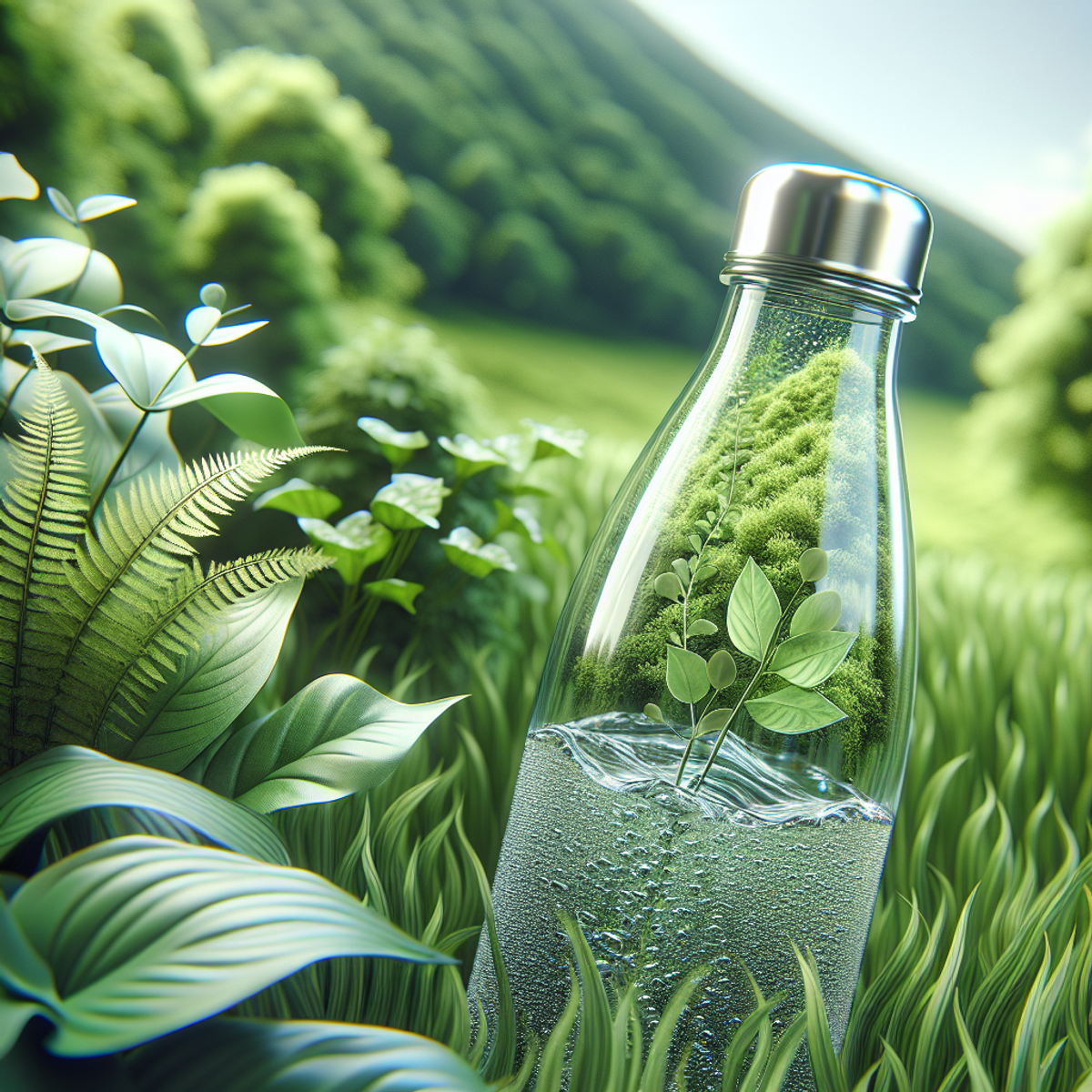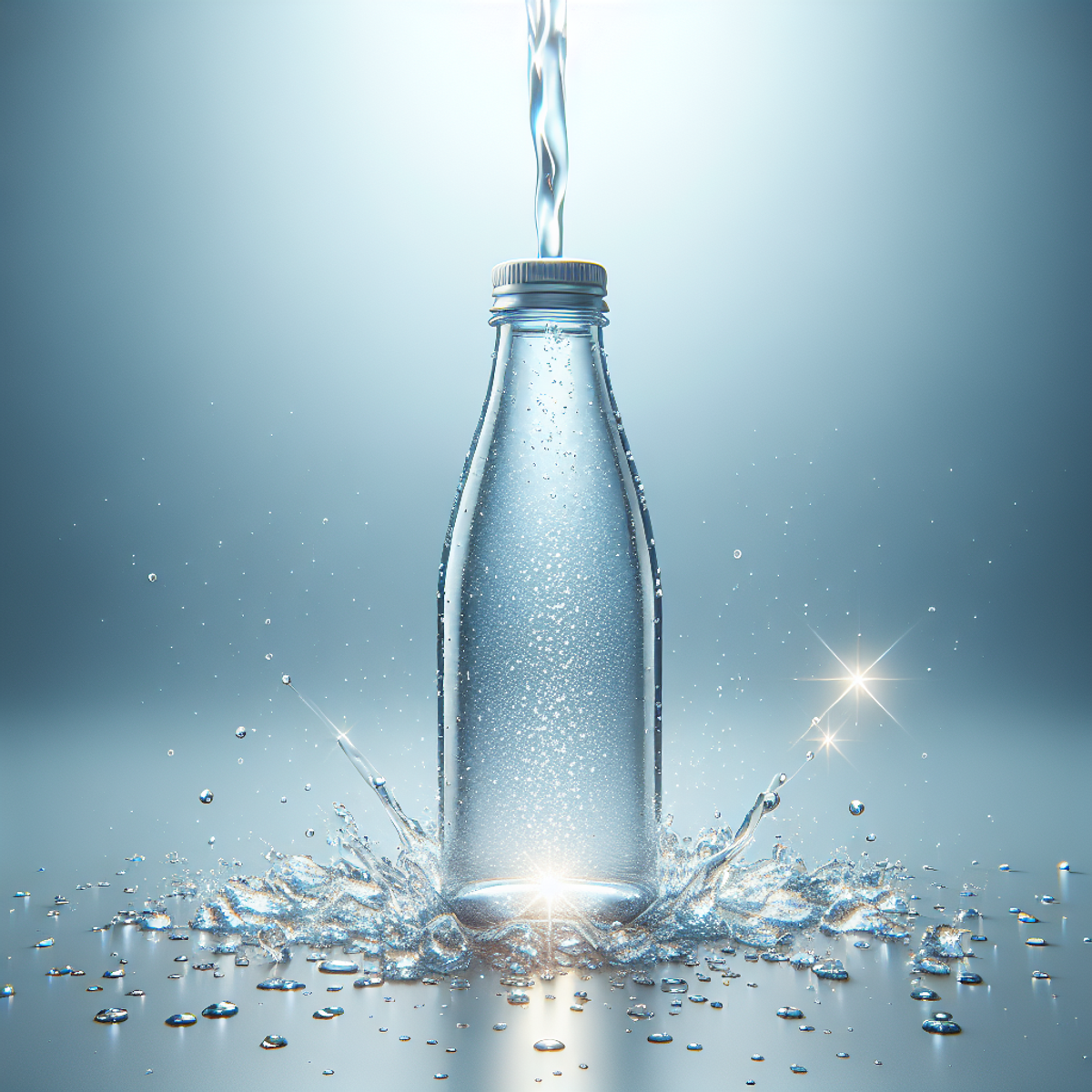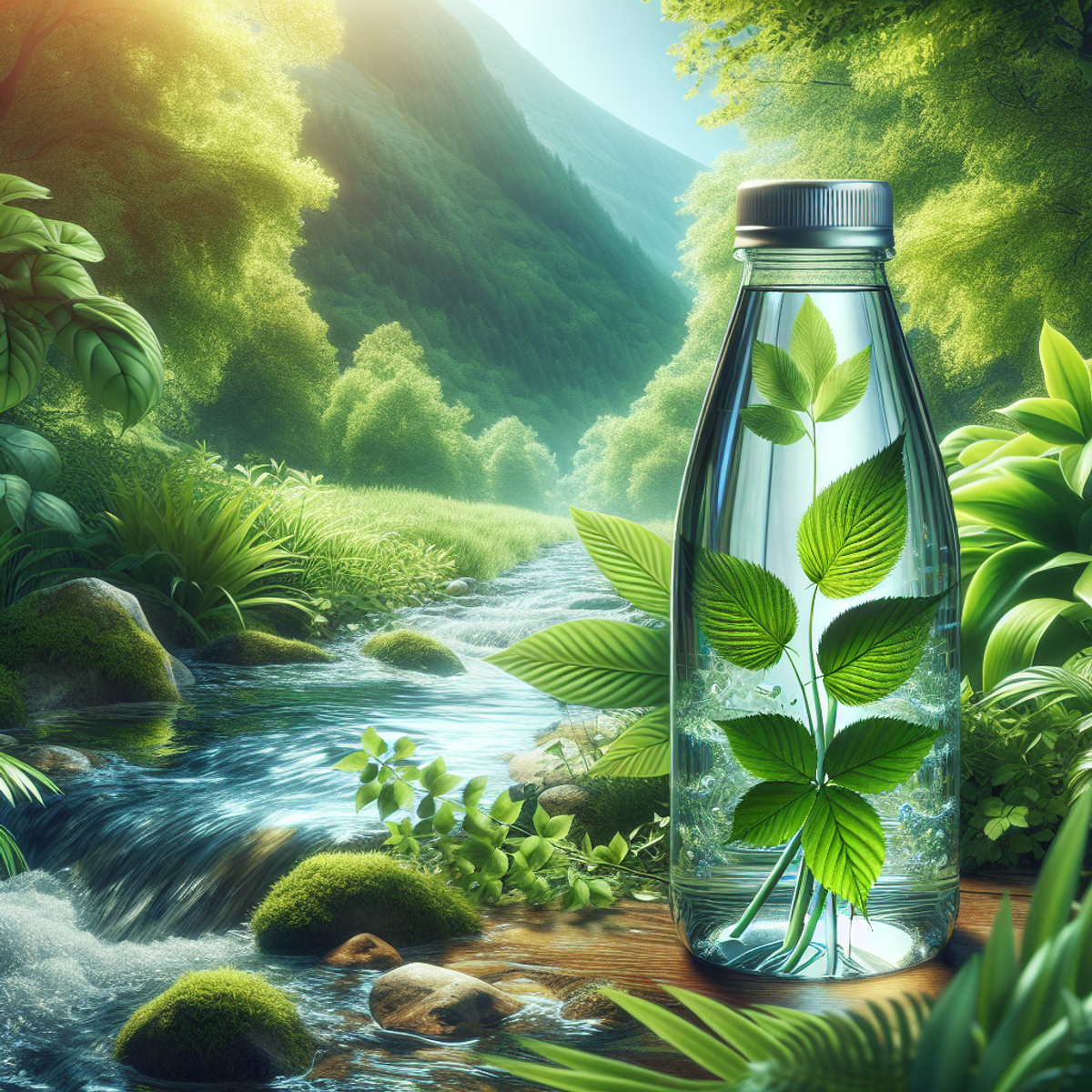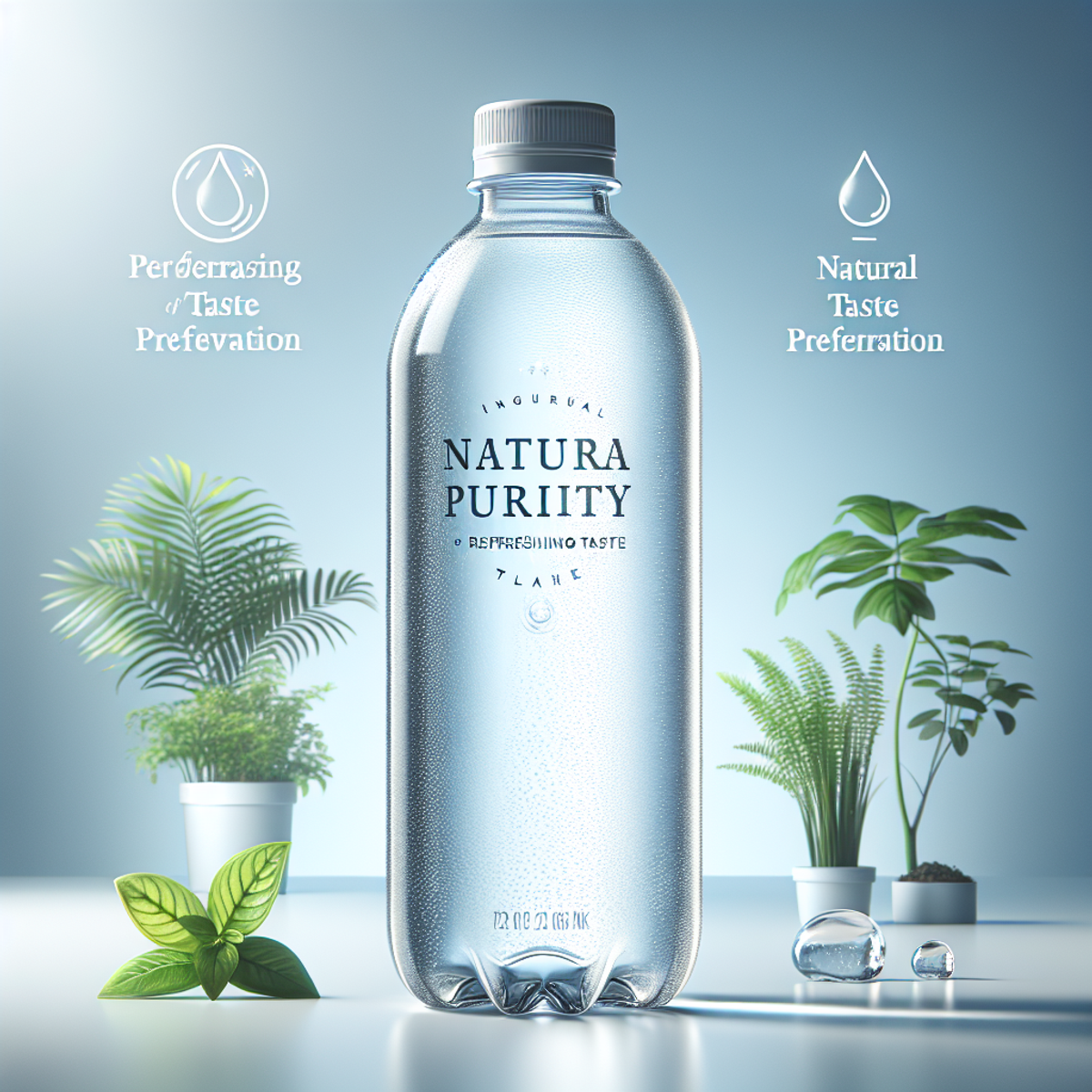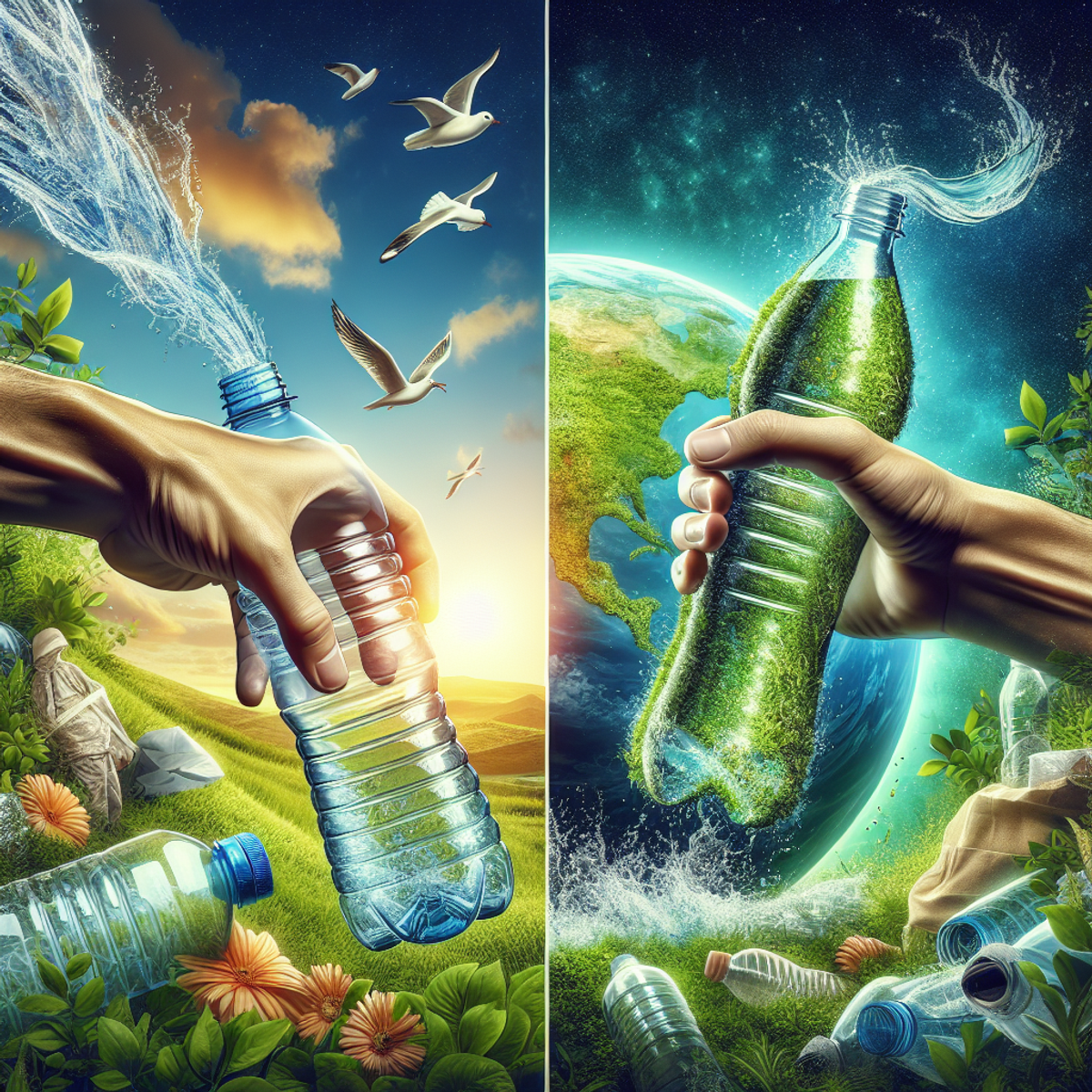Introduction
Sustainability is a hot topic these days, and for good reason. We all want a future where nature thrives, pollution is minimal, and our planet remains healthy. It’s not just about saving endangered species or preserving natural wonders; it’s about making choices that benefit both us and the environment in the long run.
Every little action matters, whether it’s conserving energy by turning off lights or reducing waste by refusing single-use plastics. But today, let’s zoom in on something we encounter every day: containers. You know, those convenient things that hold our beverages and meals.
Here’s the game-changer: reusable containers. Imagine a world with fewer overflowing landfills because you opted for a durable water bottle that lasts for years. Envision pristine oceans where marine life roams freely, unaffected by plastic garbage—because you chose a glass jar over a disposable plastic one.
And let’s not forget about what goes inside those containers—our food, our drinks. Non-toxic containers ensure that only goodness touches our bodies, without any harmful chemicals sneaking in.
In this article, we’ll explore how you can make a difference for the planet and your well-being by choosing reusable and non-toxic containers. We’ll discover how simple swaps can have a big impact on sustainability and waste reduction. Plus, I’ll share some clever tips to help you find the best options available, like checking out the 7 Best Glass Water Bottles for staying hydrated while being eco-friendly!.
1. The Environmental Impact of Single-use Disposable Containers
The numbers are shocking. Every year, we use billions of single-use disposable containers that end up polluting our planet. To put things into perspective, these containers could wrap around the Earth multiple times. Instead of being reused or recycled, they are quickly thrown away, contributing to a global waste crisis.
Shocking Statistics
- Billions produced: Manufacturers produce an enormous amount of these items each year to keep up with demand.
- Mountains in landfills: After being used just once, these containers are discarded and piled up in landfills.
The consequences? These disposable containers not only take up space in landfills but also find their way into our oceans, causing widespread pollution.
Devastating Effects
- Overflowing landfills: As landfills reach their maximum capacity, harmful substances from these containers can seep into the soil and contaminate groundwater.
- Threat to marine life: Improper disposal methods result in these containers ending up in the ocean where they break down into smaller pieces and harm marine ecosystems.
Let’s take a closer look at some specific examples:
- Danger to marine animals: Sea turtles often mistake plastic bags for their favorite food, jellyfish, leading to ingestion and potential death. Birds also face the risk of getting entangled in floating debris.
- Microplastic pollution: What was once recognizable packaging now breaks down into tiny particles known as microplastics. These microplastics not only pose a threat to marine life but also find their way back to us through the seafood we consume.
The environmental impact of these convenient but wasteful products goes beyond what we can see on the surface. It’s not just about having unsightly trash around; it’s about the harm it causes to wildlife and delicate ecosystems.
This issue requires immediate attention. The more we understand the problem, the better equipped we are to make sustainable choices that protect our planet. Moving away from single-use disposable containers is not only a personal decision but also a crucial step towards taking care of our environment together.
2. Understanding Reusable and Non-toxic Containers
Reusable containers are more than just an alternative to their single-use counterparts; they’re a cornerstone of the circular economy. This system is designed to be restorative and regenerative by design, keeping resources in use for as long as possible. Here’s why reusable containers are so important:
Keep It Circulating
- Imagine your morning coffee mug or your water bottle. Each time you refill it, that’s one less disposable container adding to the mountain of waste out there.
- Circular isn’t just a shape; it’s a sustainable model. By sticking with reusable containers, we ensure products and materials continue their useful life instead of heading straight to landfill.
Non-toxicity is Key
- Picture this: You’re enjoying your favorite meal, but instead of tasting your food, you get a hint of plastic—yikes! That’s because some containers release harmful chemicals into what we eat and drink.
- Non-toxic containers step up to the plate—literally. They’re made without those pesky chemicals like BPA, phthalates, and other villains from the periodic table that can sneak into your snacks.
How Harmful Chemicals Can Cramp Your Style:
- Taste Test Fail: Chemicals can alter the flavor of your food and drinks. And let’s be real, nobody wants a side of synthetic with their sandwich.
- Health Hazards: Some chemicals are like that friend who says they’ll help you move but bails last minute—they can do more harm than good. Long-term exposure might lead to health issues.
By choosing reusable and non-toxic containers, we’re not only reducing waste but also taking care of our health and the planet’s wellbeing. It’s like hitting two birds with one stone—except no birds get hurt because we love the environment.
So next time you pack a lunch or sip on some water, think about the container you’re using. Making small changes in our daily habits can spark big waves in our journey toward sustainability.
3. Advantages of Reusable Containers for Sustainable Living
When it comes to leading a more environmentally friendly lifestyle, reusable containers are a game-changer. They’re not just good for the planet; they’re practical for us too! Let’s dive into the benefits these sturdy companions bring to our daily lives.
Durability and Longevity
- Go the Distance: Think about it, reusable containers are like the trusty old boots that never give up on you. Made to last, they can handle the round trips from home to work or school without a hitch.
- Savings in the Pocket: With their resilience, you’re not constantly shelling out cash for replacements. It’s a one-time investment that saves money—and the environment—in the long run.
Waste Prevention
- Cut Down the Clutter: Ever notice how much trash accumulates after just one takeout meal? By choosing reusable containers, that mountain of waste becomes a molehill.
- Bulk Store Buddy: Bring them along to your local bulk store. Fill ’em up with grains, nuts, or your favorite candies—no extra packaging necessary.
- Home Sweet Home: And let’s not forget leftovers! Instead of wrapping food in disposable foil or plastic wrap, pop it into a container for another meal.
Carbon Footprint Reduction
- Less is More: Fewer single-use containers mean less production energy spent and fewer resources used.
- Travel Light: Think about all those products jet-setting around the globe. Reusable containers mean we lighten their load since we’re not constantly shipping new packaging over long distances.
- End-of-Life Matters: When they do finally retire (after a long and useful life), many reusable containers don’t leave a mess behind. They often can be recycled or repurposed, leaving a smaller carbon footprint than their single-use cousins.
Reusable containers serve as trusty sidekicks in our quest for sustainable living. Their strength and versatility reduce waste and carbon emissions without sacrificing convenience or style. As we continue our journey towards sustainability, remember that each small change adds up to make a big difference for our planet. Keep going; there are even more sustainable choices ahead!
4. Popular Types of Reusable Containers and Their Features
When it comes to picking the right reusable containers, you have plenty of options! Each type has its advantages, designed to meet different needs and preferences. Here’s a rundown of some of the most popular types in the sustainable world:
Glass Containers
- Crystal clear – see what’s inside without a second guess
- Non-reactive – flavors stay true and no harmful chemicals seep into your food
- Perfect for oven-to-table scenarios – they can handle the heat!
Stainless Steel Containers
- Tough as nails – drop them, they won’t care
- Lightweight and rust-resistant – ideal for on-the-go meals
- Go from fridge to stove with multi-purpose usage
Bamboo Containers
- A touch of nature with every use – they’re made from one of the fastest-growing plants on Earth
- Naturally antibacterial – keeps things clean without extra effort
- Perfect for dry goods storage with their aesthetic appeal
Rice Husk Containers
- Made from agricultural waste – talk about an eco-hero!
- Sturdy yet biodegradable over time
- Great for those looking to go plastic-free but prefer the feel of a lighter container
Silicone Containers
- Super flexible – squeeze them in any packed lunch bag
- Heat-resistant and freezer-safe – versatility at its best
- Ideal for baking or freezing portions thanks to their moldable nature
Each type has its own strengths. Glass is great for home chefs who love to see their creations, while stainless steel suits adventurers needing durability. Bamboo brings elegance to kitchen shelves, rice husk offers a guilt-free plastic-like experience, and silicone provides flexibility unmatched by others.
These containers are not just about carrying your food; they’re about matching your lifestyle with sustainability in mind. So whether it’s meal prepping or packing a picnic, there’s a reusable buddy waiting to join you. And remember, each time you fill them up, that’s one less single-use container bidding goodbye to our planet.
Choosing Non-toxic Containers for Food Safety and Health Benefits
When it comes to keeping food and beverages safe, the choice of container is more important than you might think. Non-toxic containers are a must-have for anyone looking to maintain a healthy lifestyle while also being mindful of the environment. Here’s why:
Why Opt for Non-toxic Materials?
- Health Comes First: Containers that come into direct contact with your food or drinks can leach chemicals if they’re made from toxic materials. This is especially true if you’re using them to store hot foods or liquids, which can increase the rate of chemical transfer.
- Taste Preservation: Ever noticed a strange taste when drinking water from a plastic bottle that’s been sitting in the sun? That’s because heat can cause chemicals to leach into your beverage, altering its pure taste.
The Risks of Conventional Plastic Containers
Conventional plastics often contain a variety of harmful substances that can end up in your body:
- BPA (Bisphenol A): Used to make certain plastics and resins, BPA can seep into food or beverages from containers made with the substance. Research suggests BPA exposure is linked to potential health effects on the brain and behavior of infants and young children.
- Phthalates: These are added to plastics to increase their flexibility, transparency, durability, and longevity. However, they may disrupt the endocrine system and have been associated with reproductive and developmental issues.
- Microplastics: With wear and tear, tiny fragments can break off and mix with whatever they’re holding. These microplastics are then ingested and have unknown long-term health impacts.
Choosing non-toxic containers isn’t just about avoiding these risks; it’s about embracing a lifestyle that prioritizes health benefits. By selecting safer materials like glass, stainless steel, bamboo, or rice husk for your reusable containers, you’re not only protecting yourself but also contributing to a healthier planet.
Remember, when shopping for containers:
- Look for labels like “BPA-free” or “phthalate-free.”
- Stainless steel should be food grade (usually marked as 304, 18/8, or 18/10).
- Glass containers are a safe bet – they don’t leach chemicals and are easy to clean.
Making informed choices starts with understanding the importance of non-toxic containers for both food safety and health benefits. This knowledge empowers you to select products that support your well-being and sustainable living goals.
6. How to Make Sustainable Choices When It Comes to Packaging
Embracing a sustainable lifestyle means being mindful about how you select and use packaging. Here’s what you can do:
Look for Eco-friendly Labels
- Check for Biodegradability: Seek out products with packaging marked as biodegradable. These materials break down naturally without harming the environment.
- Recyclability Matters: Choose containers with a recyclable symbol. It ensures the material won’t end up in a landfill but instead can be processed and repurposed.
- Compostable Options: Go for packaging that can be turned into compost, enriching soil instead of polluting it.
Opt for Multi-functional Designs
- Containers with a Second Life: Pick containers designed for reuse. Think glass jars that become storage solutions or bamboo boxes perfect for planters.
- Foldable Features: Some packaging is made to be collapsed and stored easily, ready for its next use.
- Transformable Packaging: Get creative with packaging that can transform, like a pasta box becoming a handy kitchen organizer.
Remember, every small choice adds up to significant environmental impact. By selecting reusable, biodegradable, and recyclable options, you’re playing a crucial role in reducing waste and conserving resources.
7. The Role of Businesses in Promoting Sustainable Containers
Businesses have a big impact on how consumers behave, and it’s crucial for them to actively promote sustainable containers. Using environmentally friendly packaging isn’t just something companies should do out of obligation; it can actually strengthen their brand and give them an edge in today’s eco-conscious market.
How Businesses are Taking Action
Companies from various industries are starting to realize that they have a responsibility to protect the environment. By offering sustainable containers, they not only meet legal requirements and satisfy consumer demand, but also contribute to the overall health of our planet. Here are some ways businesses are stepping up:
- Coming up with New Packaging Ideas: Forward-thinking companies are investing in research and development to come up with better packaging solutions. This has led to the creation of innovative materials like plant-based plastics and compostable biomaterials that break down safely.
- Making Changes to Their Supply Chains: By reevaluating how they transport goods, companies can reduce the amount of carbon emissions produced. Choosing lighter containers that can be used multiple times means less fuel is needed, resulting in lower greenhouse gas emissions.
- Educating Their Customers: Smart businesses understand that it’s not enough to just switch to more sustainable materials; they also need to educate their customers about why these changes are important. When people are knowledgeable about the benefits of reusing and recycling, they’re more likely to support eco-friendly practices.
Real-world Examples
Several companies have received attention for their efforts in promoting sustainable containers:
- Loop: A platform that works with brands to offer products in reusable containers that can be returned, cleaned, and refilled.
- IKEA: The well-known furniture retailer is gradually getting rid of single-use plastics from its home furnishing range and restaurants.
- Starbucks: Through initiatives such as phasing out plastic straws and giving discounts to customers who bring their own cups, Starbucks is showing its commitment to reducing waste.
The Impact of Individual Actions
What one business does can have a significant impact on others:
- It can motivate other companies to do the same because they feel the pressure to stay competitive or because they genuinely want to do what’s right.
- It can set new standards within an industry, influencing what consumers come to expect from responsible brands.
Businesses have a crucial role to play in encouraging more sustainable practices. By making eco-friendly packaging solutions like reusable and non-toxic containers a priority, they’re helping create a path towards global consumption patterns that are better for the environment.
Embracing a Sustainable Lifestyle Through Reusable and Non-toxic Containers
Let’s take a moment to appreciate how our everyday choices can create a ripple effect. When we choose reusable containers and avoid toxic materials, we’re not just making decisions for ourselves—we’re also shaping the world we want to live in.
Here’s why opting for reusable and non-toxic containers is so important:
- Championing Sustainability: Each time we use a reusable container instead of a single-use one, we’re reducing pollution and waste.
- Preserving Health: Non-toxic containers help keep harmful chemicals out of our bodies and the environment.
- Inspiring Change: Our sustainable choices can motivate others to reevaluate their own habits.
“Every time you spend money, you’re casting a vote for the kind of world you want.” – Anna Lappé
It’s not just about changing our own behaviors; it’s about spreading the message too. By sharing our experiences with friends, family, and even on social media, we can show how simple swaps can make a big impact. Whether it’s tweeting about your favorite bamboo fork or writing a blog post on creative ways to use old mason jars, every conversation matters.
The more we talk about sustainability and promote the use of reusable and non-toxic containers, the more people will join in. Let’s be the ones who set the trend for eco-friendly living and make it the norm.
So go ahead—show off those stylish lunch containers and feel proud of the positive difference you’re creating. Remember, every sustainable choice counts towards a cleaner, greener planet for everyone.

